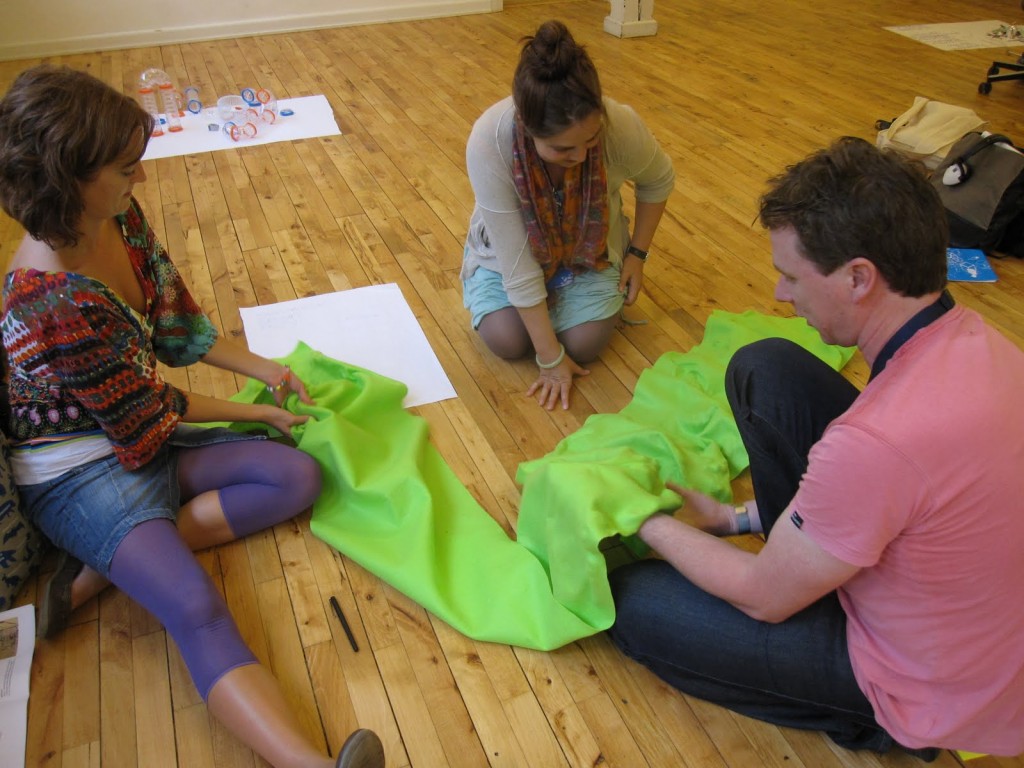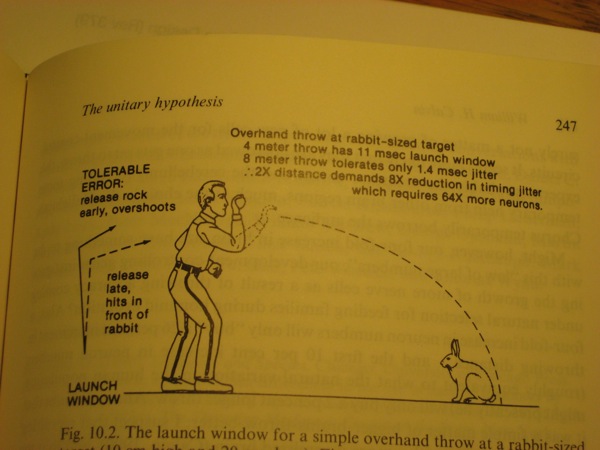UED2010 Wk 1: Getting moving
Our first week in the course. Here are some brief notes. **
Tuesday:
-
Introduced the course by going through the course profile.
-
Handed out the toolboxes with arduinos, breadboard, multimeters, servo motors, and some simple tools.
-
Pulled apart some gadgets which everyone had brought in. Looked at the components inside and discussed what the functions might be.
-
Tried to get the Arduinos hooked up and running, but we ran out of time, so I asked the students to do this before the next class.
Friday:
-
Started by checking that everyone’s arduino was working. There were some problems with the drivers for the serial port for a couple of people, but we managed to get that working. Also, need to check that Nano board is selected with Atmega168 rather than Atmega328.
-
Described the pins on the nano board and showed how to attach a servo motor.
-
Played around with the example servo sweep program, tried different values in the loops to make the servo move at different speeds.
-
Went down to the e-lab and collected some components (potentiometers, hook-up wire, and resistors).
-
Added a potentiometer and pull-down resistor to the circuit and used the example servo knob program so we could control the position of the servo by turning the knob.
-
Used Serial.println commands to look at what values were being read from the potentiometer and adjust the program.
-
Used character-movement tinkering cards to choose a movement and character to design for.
**Task for next Tuesday: ** With the character and movement cards your group chose, try to tinker a kinetic sculpture driven by the servo motor that moves in a way that expresses those qualities. For example, if your words were ‘fierce leaping’ you need to create a sculpture that somehow leaps in a fierce way.
See Ben Hopson’s kinetic work for lots of ideas for how to create interesting movements out of very simple materials.
Gestural rhythmicity
Tony Orrico: Penwald: 2: 8 circles (2009)
"The second part of Gesture and Speech is entitled ‘Memory and Rhythms’, and it is above all in Leroi-Gourhan’s attention to the rhythmicity of technical activity, rather than its grounding in social memory, that this counter-argument appears. A great many operations, he observes, entail the regular repetition of certain manual gestures: these include hammering, sawing and scraping. And whether or not the artisan has an idea in mind of the final form of the artefact he is making, the actual form emerges from the pattern of rhythmic movement, not from the idea." (Ingold, 2009, p.438)
Ingold, T. (1999). ‘Tools for the Hand, Language for the Face’: An Appreciation of Leroi-Gourhan’s Gesture and Speech. Studies in the History of Philosophy Biololgy and Biomedical Sciences, 30(4), 411-453.
Materialities Workshop

The week before last, I was at the Designing Interactive Systems conference. I was there as one of the organizers of a one day workshop on the topic of ‘Materialities Influencing the Design Process’. We haven’t managed to make much of a synthesis of the outcomes of the workshop yet, but I have got the documentation for the day up on line:
And here’s the abstract from the workshop website:
The use of material artefacts within the design process is a long-standing and continuing characteristic of interaction design. Established methods, such as prototyping, which have been widely adopted by educators and practitioners, are seeing renewed research interest and being reconsidered in light of the evolving needs of the field. Alongside this, the past decade has seen the introduction and adoption of a diverse range of novel design methods into interaction design, such as cultural probes, technology probes, context mapping, and provotypes. Yet, interaction design does not have a cohesive framework for understanding this diverse range of practices. Such a framework would assist practitioners in comparing and choosing between methods across the different stages, contexts and stakeholder relations within a design process. It seems that one fruitful place to start in addressing this lack is to focus in on the common characteristic that these practices share of _materialities_ influencing the design process. This workshop proposes to bring together practitioners, educators, and researchers to discuss and begin the development of a shared understanding around this theme.


